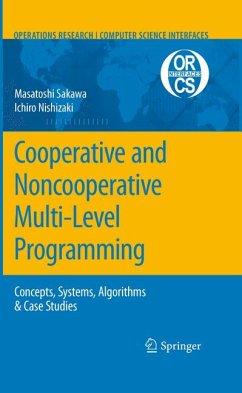Dieser Download kann aus rechtlichen Gründen nur mit Rechnungsadresse in A, B, BG, CY, CZ, D, DK, EW, E, FIN, F, GR, HR, H, IRL, I, LT, L, LR, M, NL, PL, P, R, S, SLO, SK ausgeliefert werden.
"I am very glad to have reviewed this book and believe that it is a great addition to the linear programming and optimization community. Any researcher who has to deal with multi-level linear programming will find this book a valuable reference. It also can be a good collection for university libraries. Some elegant ideas inside the multi-level linear programming formulism, such as ambiguity of human judgments, uncertainty description of feature events in decision-making process, can open doors for future thorough and innovative research." (C. Cai, Journal of the Operational Research Society, Vol. 62 (2), 2011)
"The book presents an in-depth study of bilevel programs making use of models and methods in this class and will satisfy readers interested in this area of mathematical programming. The book also contains many good examples ... . The target audience of the book is upper-level undergraduate and graduate students and researchers in the area of operations research and mathematical programming. The book will also be of interest to practitioners using bilevel modeling and decision-making and decision makers in hierarchical organizations." (Margaret M. Wiecek, Mathematical Reviews, Issue 2011 j)









